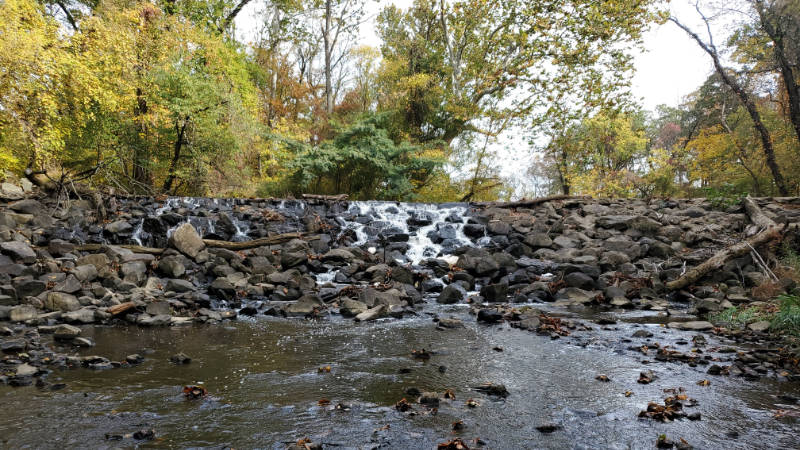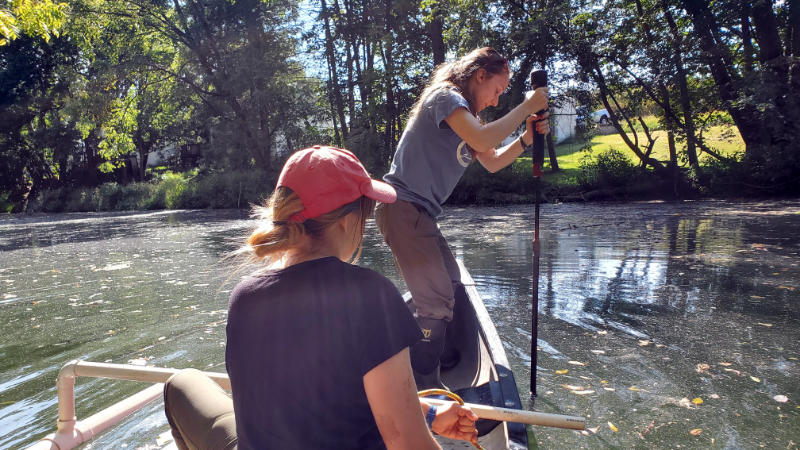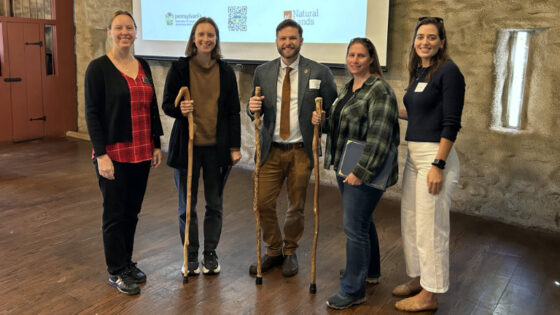
The Ghosts of Land Use Past
By Marc Peipoch, Ph.D.
Whether or not you believe in ghosts, past actions can haunt us. This is especially true of environmental actions.
The extensive construction of milldams in Colonial North America is a significant environmental legacy with present-day consequences on our waterways.
Once a reliable source of power and irrigation water, thousands of these obsolete dams still persist in our streams and creeks, often unnoticed, and apparently harmless. Many are too small to be listed in the National Inventory of Dams or fall under the same level of scrutiny as larger ones.

But are they harmless? Certainly not for migratory fish, like the American shad, that are blocked from their breeding grounds or for the people who have been injured or drowned in milldam-related accidents.
Some stakeholders have also argued that milldams degrade water quality while others, including researchers, have said removing them could be a problem too — potentially releasing backed up and buried sediment and nutrients into downstream waters.
These fears arise from experiences with the removal of large dams — Conowingo-size dams — but milldam removal in small streams could have very different outcomes.
In response, Stroud Center scientists have worked on multiple projects over the past five years to assess how milldams affect the filtering capacity of streams and whether their removal affects water quality.
Jinjun Kan and I, along with our collaborators, have done and continue to do extensive research in two milldams located in Chiques Creek in Lancaster County, Pennsylvania, and a third one in the Christina River near the I-95 highway. Combining grab-sample collection and automated sensors, we monitored water levels, temperature, dissolved oxygen, and nutrient concentrations in groundwater and surface water above these three milldams.


Microbial communities in the sediments above and below the dams, as well as communities in the sediment retained immediately upstream of the dams, are still being studied. We then compared these data to undammed sections of the same creeks and witnessed how all these parameters changed after one of the two dams in Chiques Creek, the Krady dam, was removed in 2018.


What we found is cumulative evidence that relic milldams no longer alter the physical, chemical, and microbial processes of streams in a significant manner.
- Average daily stream temperature above milldams was less than 1 degree Fahrenheit warmer than in free-flowing sections.
- Although dissolved oxygen can sporadically reach low levels above milldams, concentrations of dissolved oxygen were well above the limit to support aquatic life more than 90% of the time.
- Similarly, rates of nitrogen removal in stream sediments and soils adjacent to milldams are low compared to many other aquatic ecosystems, and definitely not higher than in undammed sections.
- Some scientists have hypothesized that by decreasing the stream water level, milldam removal could cause more nitrogen from the riparian zone to leak into and pollute streams.
- However, we found that the stream nitrogen concentrations in these soils remained stable after the Krady dam was removed, suggesting milldam removal has limited to no impact on stream water quality. Microbial processes also remained stable, but it may take years to see the full effect on microbes.
This is good news for water quality, but milldams are still a threat to humans, fish, and mussels. Knowing this, those working to let streams run wild can focus on strategies that address the true threats milldams pose, which may allow for more cost-effective approaches such as dam breaching.
Read the Stroud Center’s published research on milldams:
- Influence of Relict Milldams on Riparian Sediment Biogeochemistry
- Saturated, Suffocated, and Salty: Human Legacies Produce Hot Spots of Nitrogen in Riparian Zones
- Backed-Up, Saturated, and Stagnant: Effect of Milldams on Upstream Riparian Groundwater Hydrologic and Mixing Regimes
- Nitrogen Sinks or Sources? Denitrification and Nitrogen Removal Potential in Riparian Legacy Sediment Terraces Affected by Milldams
- Effects of Relic Low-Head Dams on Stream Denitrification Potential: Seasonality and Biogeochemical Bontrols
- Deciphering the Origin of Riverine Phytoplankton Using in-Situ Chlorophyll Sensors
You can support research like this that helps people make informed decisions. Financial contributions to the Stroud Center are used, in part, to publish our scientific findings in open access, freely available journals. Make a difference today.



